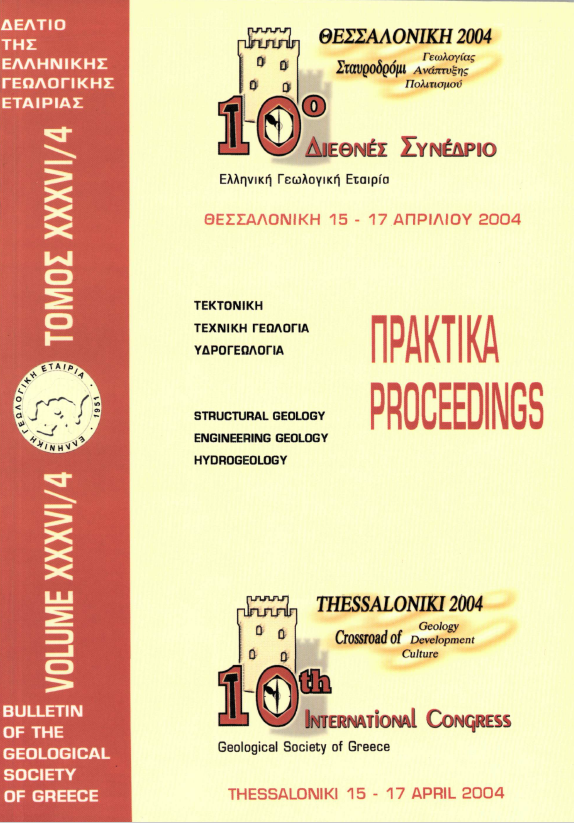Revision of the geological map and 3D modelling of the geological structure of the Samaria Gorge Region, W. Crete

Abstract
The island of Crete is situated near the front of an active plate margin. Therefore, it is of great interest in the framework of the International Continental Drilling Project (I.C.D.P.). A short review of the digital modelling methods, their applications in the geosciences and the associated advantages is also presented. The digital 3-dimensional geometric model of the geological structure of the Samaria Gorge region is based on the study of the stratigraphy and the tectonic evolution of the metamorphic rocks of the Plattenkalk group in SW Crete. Data from the geological map of Greece (Vatolakkos sheet, 1:50.000) and from the literature have been supplemented by geological mapping and structural analyses. In our study we applied interactive 3D CAD methods implemented in the integrated software package SURPAC2000. The surface geology has been draped over a digital elevation model of the topography in order to model the geometry of the subsurface structures. Two hypotheses about the geological structure of the region are examined: a) the one given by the existing geological map, which proposes a syncline structure and b) the one resulting from the combination of existing data, corrections carried out through repeated 3D simulations and new field observations. After distinguishing in the S of the study area the Trypali union, overthrusted on the Plattenkalk group, we propose an anticline structure with a NNE/SSW striking axis dipping to the NE.
Article Details
- How to Cite
-
ΜΑΝΟΥΤΣΟΓΛΟΥ Ε., ΣΠΥΡΙΔΩΝΟΣ Ε., SOUJON Α., & JACOBSHAGEN, V. (2001). Revision of the geological map and 3D modelling of the geological structure of the Samaria Gorge Region, W. Crete. Bulletin of the Geological Society of Greece, 34(1), 29–36. https://doi.org/10.12681/bgsg.16940
- Section
- General and Structural Geology

This work is licensed under a Creative Commons Attribution-NonCommercial 4.0 International License.
Authors who publish with this journal agree to the following terms:
Authors retain copyright and grant the journal right of first publication with the work simultaneously licensed under a Creative Commons Attribution Non-Commercial License that allows others to share the work with an acknowledgement of the work's authorship and initial publication in this journal.
Authors are able to enter into separate, additional contractual arrangements for the non-exclusive distribution of the journal's published version of the work (e.g. post it to an institutional repository or publish it in a book), with an acknowledgement of its initial publication in this journal. Authors are permitted and encouraged to post their work online (preferably in institutional repositories or on their website) prior to and during the submission process, as it can lead to productive exchanges, as well as earlier and greater citation of published work.






